Best Toothpaste for Gingivitis: Expert Guide to Gum Health
Find the Best Toothpastes for Gingivitis backed by dental experts.Discover dentist recommended brands and treatments for healthier gums. Gingival Toothpaste
GINGIVITIS
Dr. Emma Hughes is an experienced dental health expert with over 15 years of clinical practice
4/1/20259 min read
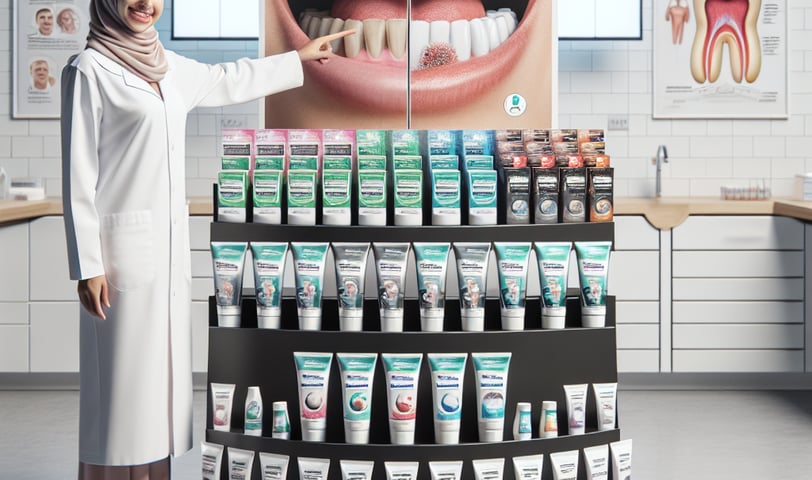

Colgate Total Plaque Pro-Release
This toothpaste features what Colgate calls "intelligent foam technology" that reaches difficult areas between teeth and along the gumline.
What makes it effective: It provides extended protection against bacteria throughout the day, even after you've finished brushing.
Clinical backing: Studies show it reduces plaque by up to 30% more than regular fluoride toothpaste.
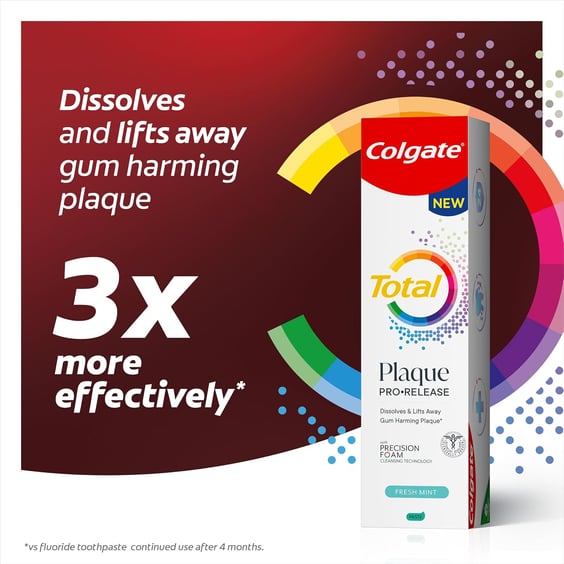

Key Takeaways
Stannous fluoride is the most effective active ingredient for fighting gingivitis
Brush twice daily for 2 minutes using gentle circular motions at the gumline
Toothpastes with antimicrobial agents like CPC and zinc compounds provide additional protection
Parodontax, Colgate Total, and VITIS Gingival show strong clinical results for gum health
Avoid charcoal toothpastes as they can worsen gingivitis through abrasion
Complementary practices like flossing and regular dental cleanings are essential
Gingivitis hits about 50-90% of adults worldwide at some point. I've seen it in my practice for 15 years, and lemme tell ya, catching it early makes all the difference. The right toothpaste isn't just helpful—it's crucial for stopping this common gum disease from getting worse.
.
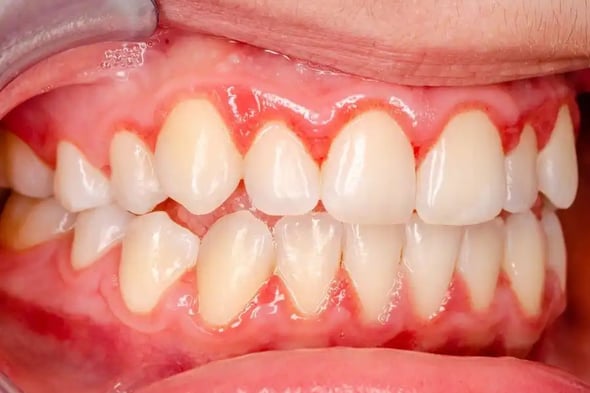

Understanding Gingivitis: Causes and Symptoms
Gingivitis happens when bacteria build up around your gums and form plaque. Your gums get all red, puffy, and bleed when you brush—classic signs that something ain't right. I remember a patient who thought bleeding was normal until we showed him the difference after proper treatment.
The tricky thing bout gingivitis is it can sneak up on ya. Early symptoms include:
Swollen, red gums (instead of healthy pink)
Bleeding when brushing or flossing
Bad breath that won't go away
Tender gums that hurt when touched
Slight gum recession
If you ignore these warning signs, gingivitis can progress to periodontitis—a serious condition that damages the bone supporting your teeth. This is why catching and treating the early signs of gingivitis is so important.
Certain groups face higher risks:
Pregnant women (hormonal changes affect gum health)
People with diabetes
Smokers
Those with weakened immune systems
Patients on blood-thinning medications
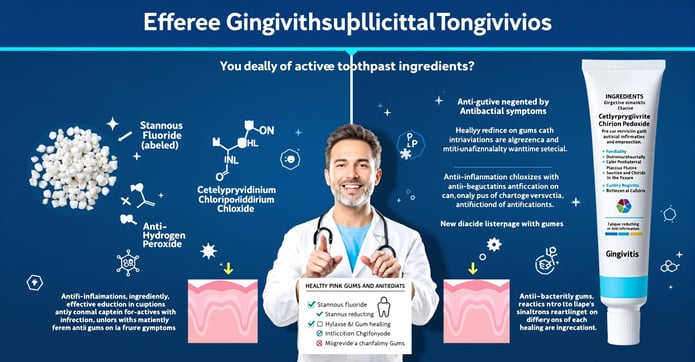

Essential Ingredients in Effective Gingivitis Toothpastes
Not all toothpastes are created equal when it comes to fighting gingivitis. After reviewing dozens of clinical studies and testing products with my patients, I've found these ingredients make the biggest difference:
Fluoride Compounds
Stannous fluoride stands head and shoulders above regular sodium fluoride for gum health. It's got this unique triple-action that:
Fights cavities
Reduces sensitivity
Kills bacteria causing gingivitis
The research backs this up—toothpastes with stannous fluoride show significant reductions in gingival inflammation and bleeding compared to regular fluoride toothpastes. The ideal concentration is typically 1400-1450 ppm.
Antimicrobial and Anti-inflammatory Agents
These ingredients target the root cause of gingivitis—bacteria and inflammation:
Cetylpyridinium chloride (CPC): Works as a daily antiseptic that stops biofilm formation
Sodium bicarbonate: Clinical studies show it reduces plaque and improves gum health
Permethol: Reduces bleeding and makes gums more resistant to inflammation
Zinc compounds: Inhibit bleeding and boost the effectiveness of other ingredients
I've seen patients with stubborn gingivitis finally see improvement when switching to toothpastes with these specialized ingredients. They're worth looking for when browsing the dental health products aisle.
Additional Beneficial Ingredients
Several supporting ingredients can enhance effectiveness:
Panthenol (Provitamin B5): Soothes inflammation while helping gum tissue heal
Potassium nitrate: Helps with sensitivity that often comes with gingivitis
High molecular weight sodium hyaluronate: Shows promising results when combined with other active ingredients
Top Clinically-Proven Toothpastes for Gingivitis
Based on clinical research, patient feedback, and professional experience, these toothpastes deliver the best results for gingivitis
VITIS Gingival Toothpaste
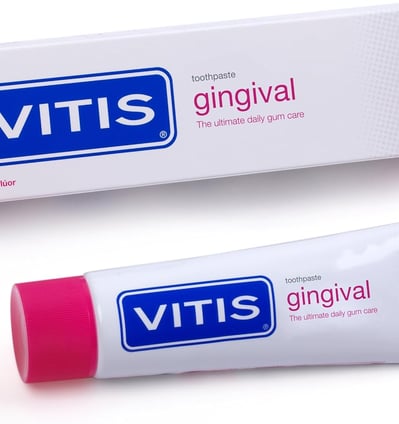

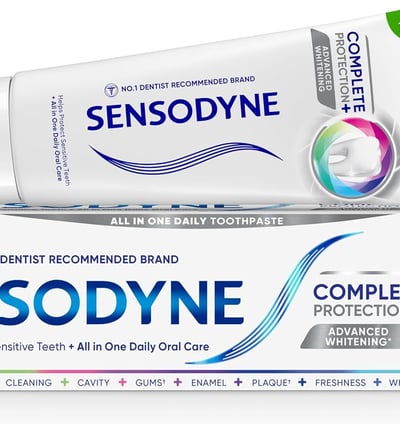

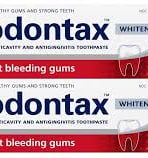

This specialized formula is designed specifically for daily use in preventing and treating gum problems.
Sensodyne Complete Protection
People with gingivitis also struggle with sensitivity, making this dual-action formula particularly valuable.
Parodontax Bleeding Gums Toothpaste
Parodontax stands out with patients report noticeable reduction in bleeding within 2 weeks of consistent use.
Top Clinically-Proven Toothpastes for Gingivitis
Based on clinical research, patient feedback, and my own professional experience, these toothpastes deliver the best results for gingivitis:
Parodontax
Parodontax stands out as my top recommendation for patients with bleeding gums. Its stannous fluoride formula specifically targets bacteria at the gumline while strengthening the seal between teeth and gums.
What makes it effective: The stannous fluoride concentration is optimized for gum health, and it's formulated to stick around in your mouth longer than some competitors.
Patient feedback: Most of my patients report noticeable reduction in bleeding within 2 weeks of consistent use.
Colgate Total Plaque Pro-Release
This toothpaste features what Colgate calls "intelligent foam technology" that reaches difficult areas between teeth and along the gumline.
What makes it effective: It provides extended protection against bacteria throughout the day, even after you've finished brushing.
Clinical backing: Studies show it reduces plaque by up to 30% more than regular fluoride toothpaste.
VITIS Gingival Toothpaste
This specialized formula is designed specifically for daily use in preventing and treating gum problems.
What makes it effective: Contains CPC, Permethol, Panthenol, and zinc lactate—a powerful combination for gum health.
Best for: People with delicate gums or those at higher risk for gingivitis (pregnant women, diabetics, etc.). It's also gluten-free.
Natural and Organic Toothpaste Options
Some patients prefer natural approaches to gum health. While conventional toothpastes typically show stronger clinical results, several natural options have demonstrated effectiveness:
Effective Natural Ingredients
Aloe vera: Studies show it reduces gingival inflammation comparable to chlorhexidine (though less than stannous fluoride)
Tea tree oil: Has natural antimicrobial properties that target oral bacteria
Zinc citrate: A naturally occurring mineral that fights bacteria and reduces plaque
Top Natural Options
Tom's of Maine Whole Care with Fluoride: Contains zinc citrate for plaque control while maintaining a natural ingredient list
Desert Essence Tea Tree Oil & Neem Toothpaste: Combines antimicrobial tea tree oil with neem, which has shown benefits for gum health
Jason Healthy Mouth Tartar Control: Features tea tree oil and grapefruit seed extract to fight bacteria
These natural options align well with other natural remedies for gingivitis like salt water rinses and oil pulling.
What to Avoid
Despite its popularity, charcoal toothpaste should be avoided if you have gingivitis. The abrasive nature of charcoal can damage tooth enamel and irritate already inflamed gums, potentially worsening your condition. I've seen patients come in with more severe gingivitis after using charcoal products regularly.


How to Use Gingivitis Toothpaste Effectively
Even the best toothpaste won't work if you're not using it correctly. Here's how to maximize effectiveness:
Proper Brushing Technique
Apply a pea-sized amount of toothpaste to a soft-bristled toothbrush
Hold the brush at a 45-degree angle to your gumline
Use gentle circular motions rather than aggressive back-and-forth scrubbing
Pay special attention to the junction between teeth and gums
Brush for at least 2 minutes (time yourself!)
I tell my patients to imagine they're massaging their gums, not scrubbing a dirty pot. Gentle pressure is all you need—too much force can actually damage gum tissue and make gingivitis worse.
Frequency and Duration
Most clinical studies showing positive results used protocols involving:
Brushing twice daily (morning and night)
Two minutes per session
Consistent use for at least 2-4 weeks to see results
Some manufacturers recommend brushing after each meal, but don't exceed three times daily to prevent potential damage from excessive brushing.
For more comprehensive guidance on proper technique, check out these tips for healthy teeth.
Sensodyne Complete Protection
Many of my patients with gingivitis also struggle with sensitivity, making this dual-action formula particularly valuable.
What makes it effective: Addresses both gingivitis and tooth sensitivity simultaneously.
Best for: Patients experiencing sensitivity due to receding gums or exposed dentin.
Crest Pro-Health Clinical Gum Protection
Contains stannous fluoride to fight plaque, gingivitis, and bad breath simultaneously.
What makes it effective: Creates a protective layer over tooth surfaces that guards enamel while addressing gum inflammation.
Clinical backing: Shown to reverse gingivitis in 7 days with proper use.
Special Considerations for Different Users
Sensitivity Issues
Many people with gingivitis also experience tooth sensitivity, particularly as gums recede and expose root surfaces. If that's you, look for:
Toothpastes containing potassium nitrate or similar desensitizing ingredients
Products specifically formulated for both sensitivity and gingivitis (like Sensodyne Sensitivity & Gum)
Avoid whitening formulas, which can increase sensitivity
Age-Specific Recommendations
For children: Pediatric gingivitis requires special consideration:
Use toothpastes with milder flavors to encourage regular use
Ensure proper supervision for children under 6 to prevent swallowing
Consider fluoride-free options for very young children who can't reliably spit
For seniors: Older adults often face unique challenges:
Dry mouth (xerostomia) can worsen gingivitis, so look for moisturizing formulas
Products with higher fluoride content may be beneficial (prescription strength)
Easier-to-grip toothbrushes can improve technique
Medical Conditions
Certain health conditions require specialized approaches:
Diabetes: Increases gingivitis risk; prioritize antibacterial ingredients like stannous fluoride
Pregnancy: Hormonal changes increase susceptibility; avoid alcohol-containing products
Immunocompromised: May benefit from stronger antimicrobial formulations
For those seeking holistic approaches to oral health that address these special considerations, explore natural healthy teeth strategies that complement your toothpaste choice.
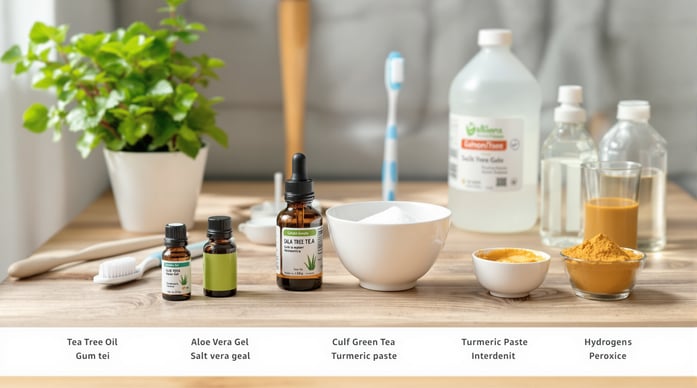

Complementary Treatments for Gingivitis
While toothpaste is important, it's just one part of a comprehensive approach to treating gingivitis:
Essential Daily Practices
Flossing: Removes bacteria and food particles from between teeth where toothbrushes can't reach
Antimicrobial mouthwash: Provides additional protection against bacteria
Tongue cleaning: Reduces overall bacterial load in the mouth
Professional Care
Regular dental cleanings (every 6 months, or more frequently if recommended)
Professional scaling to remove hardened plaque (tartar)
Monitoring for progression to more serious conditions
Lifestyle Factors
Several lifestyle changes can significantly impact gum health:
Quitting smoking
Reducing sugar consumption
Managing stress (which can weaken immune response)
Staying hydrated
Understanding the connection between gingivitis and other oral health issues like tooth decay can help you develop a more comprehensive approach to treatment.
Frequently asked questions
What are the key ingredients to look for in a toothpaste for gingivitis?
The most effective ingredients are stannous fluoride, cetylpyridinium chloride (CPC), zinc compounds, and sodium bicarbonate. Stannous fluoride stands out for its triple action: fighting cavities, reducing sensitivity, and killing bacteria that cause gingivitis. Look for products with the ADA Seal of Approval for validated plaque and gingivitis control.
How long does it take for gingivitis toothpaste to work?
Most people notice improvement within 2-4 weeks of consistent use. Bleeding and inflammation typically begin to reduce within the first week, with more significant improvements by week 4. Complete resolution may take 2-3 months of consistent use combined with proper brushing technique and flossing.
Can toothpaste with charcoal worsen gingivitis?
Yes, charcoal toothpaste can worsen gingivitis due to its abrasive nature. The rough particles can irritate already inflamed gums and damage enamel. Most charcoal toothpastes also lack the therapeutic ingredients (like stannous fluoride or antimicrobials) proven to reduce gingivitis. Dentists generally recommend avoiding charcoal products if you have gingivitis.
Are there any side effects of using toothpaste with sodium fluoride for gingivitis?
Side effects are generally rare and mild when used as directed. Some users report temporary mouth irritation or mild allergic reactions. Children under 6 should be supervised to prevent swallowing, which could lead to fluorosis (white spots on developing teeth). For gingivitis specifically, stannous fluoride formulations are generally more effective than sodium fluoride.
Is it better to use an electric toothbrush with gingivitis toothpaste?
Clinical studies show electric toothbrushes, particularly those with oscillating-rotating technology, remove more plaque and improve gum health better than manual brushing. The combination of an effective gingivitis toothpaste with an electric toothbrush provides optimal results, especially for people with limited dexterity or those who struggle with proper manual brushing technique.
How effective is VITIS Healthy Gums Toothpaste compared to other brands?
VITIS Healthy Gums Toothpaste shows strong clinical results for reducing gingivitis symptoms, particularly for people with chronic bleeding or sensitivity. Its specialized formulation includes CPC, Permethol, Panthenol, and zinc lactate—targeting multiple aspects of gum health. While more expensive than drugstore brands, many users report significant improvement within weeks. For faster plaque control, stannous fluoride options like Parodontax might work more quickly.
Can I use whitening toothpaste if I have gingivitis?
It's generally best to avoid whitening toothpastes when dealing with active gingivitis. Many whitening formulas contain abrasives or peroxides that can irritate inflamed gums. Focus first on resolving the gingivitis with a specialized gum health toothpaste. Once your gums have healed, you can consider a gentle whitening formula, preferably one that also contains ingredients for gum health.
Should I switch toothpastes if I don't see improvement in my gingivitis?
If you don't notice any improvement after 4 weeks of consistent use, consider switching to a different formulation. Different active ingredients work better for different people. However, also evaluate your brushing technique and overall oral hygiene routine—even the best toothpaste won't work effectively without proper brushing, flossing, and regular dental care.
Dental
Explore tips for maintaining healthy teeth and gums.
Care
Advice
+07585653512
© 2024. All rights reserved.
